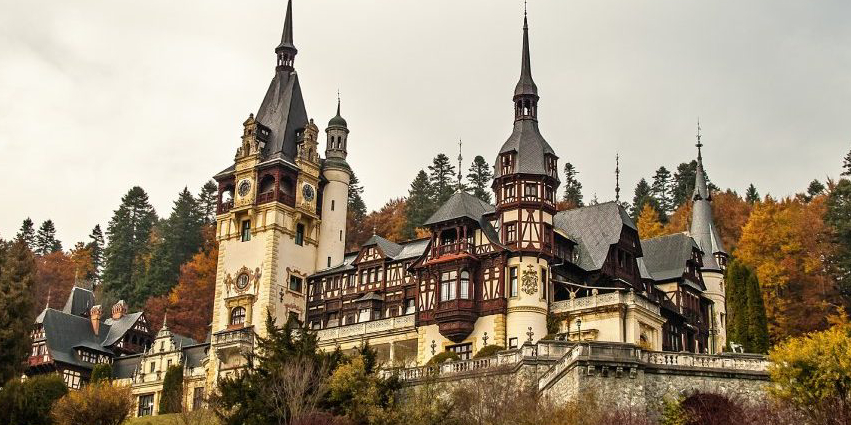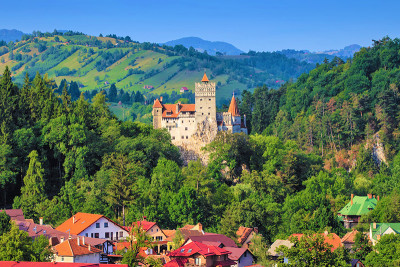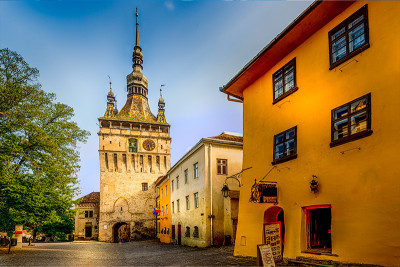Romania’s Queen Marie was born as Marie Alexandra Victoria of Edinburgh on October 29th, 1875 in Kent, England. She was known as Queen Marie, Marie of Romania, and Marie of Edinburgh. She was the last Queen of Romania and was the wife of King Ferdinand I.
Early Life
Marie was born into the British royal family and was the eldest daughter of Prince Alfred, Duke of Edinburgh, and former Grand Duchess Maria Alexandrovna of Russia. When she was born in 1875, her birth was celebrated with the firing of guns. She was named after her mother and grandmother, but she was nicknamed Missy.
Marie had four siblings and one older brother. She, like the rest of her siblings, was baptized in the Anglican Church, despite her mother being of Russian Orthodox faith. She was raised primarily by her mother, as her father was often busy with work in the British Royal Navy. When he was at home though, he enjoyed playing games with his kids.
Marriage And Becoming Princess
Marie grew up to be a beautiful young woman with “sparking blue eyes and silky fair hair.” She was courted by many royal bachelors, including Prince George of Wales. Prince George was actually Marie’s first cousin, and Marie’s mother was against marrying first cousins because of her Russian Orthodox faith.
It was right around the time that Marie rejected Prince George that King Carol I of Romania was looking for a suitable bride for Crown Prince Ferdinand. King Carol I wanted to ensure the continuation of his line, the House of Hohenzollern-Sigmaringen.
Marie’s mother suggested that Marie meet Ferdinand, perhaps with the motive of ameliorating the relationship between Russia and Romania, as there was tension over who controlled Bessarabia. Marie and Ferdinand met and liked each other, and so their parents arranged for their marriage.
The couple finally married January 10, 1893 in Sigmaringen Castle in Baden-Württemberg, in southwestern Germany, as Ferdinand’s family was German.
Ferdinand was Catholic while Marie was Anglican, and so the couple had three wedding ceremonies: one civil, and one in each of their respective religions. When Marie arrived in Romania, she was greeted with a warm welcome. The couple had six children, with the first being born just nine months after the couple married.
Marie was married when was only 18 and the first few years of her marriage to the King Ferdinand I of Romania were rocky. Eventually, they learned to live together and Marie said that they were “the best associates, the most loyal companions, but our lives intertwine only in certain matters.”
Marie gave deferential respect to her husband, and her husband respected her because she was very knowledgeable, cultured and worldly. He invited her to many military events because she held a positive presence.
World War I
Marie believed it was important to help her new country however she could. During the second Balkan War in 1912, she took over the cholera camp’s administration at Zimnicea, in southern Romania. This inspired her to continue this type of nursing work in the future. During World War I, Marie helped reorganize hospitals, she visited trenches, and she even volunteered as a nurse. Two of her daughters also joined her in these duties.
Marie and Ferdinand became Queen and King of Romania in 1914 when King Carol I passed away. However, because of the war they did not have their coronation ceremony until 1922. A close friend of Marie’s, Princess Anne Marie Callimachi, wrote that “as Crown Princess, [Marie] had been popular; as queen, she was more loved.”
When Marie and Ferdinand were given power, Marie pressured Ferdinand to enter into the war. Marie called many of her European contacts and reigning relatives, trying to find the best terms for Romania to be able to enter the war.
Staying neutral was not going to be possible forever and was coming with negative consequences. Marie wanted to join the Triple Entente (Russia, France and Britain) in part because she was of both British and Russian descent. Eventually, Ferdinand gave in and on August 17, 1916 he signed a treaty with the Entente and declared war on Austria-Hungary.
When Romania entered the war, Marie helped with the Romanian Red Cross and visit hospitals daily.
When the Russian Revolution ended in November 1917 and the Bolsheviks won, Romania became surrounded by the enemy, with no hope for help from allies. Ferdinand then signed the Treaty of Focsani on December 9, 1917, which was an armistice agreement that ended hostilities between Romania and the Central Powers (Germany, Austria-Hungary, the Ottoman Empire, and Bulgaria).
Marie believed this treaty to be perilous and vehemently opposed to signing of the Treaty of Bucharest, which was a peace treaty between Romania and the Central Powers in May 1918. Ferdinand refused to sign the treaty and so the Prime Minister, Alexandru Marghiloman, signed it instead. The war was finally officially over with the Armistice with Germany, signed November 11, 1918.
Because Marie and Ferdinand were against the Treaty of Bucharest, they earned themselves a prominent role in the Paris Peace Conference in 1919. Marie led many of the negotiations herself, setting aside other Romanian officials, much to the shock of many of the other world leaders in attendance. As a result of the conference, there was international recognition of Greater Romania, doubling the size of the country and increasing the population by 10 million.
Death And Legacy
King Ferdinand passed away in 1929. By 1937, Marie began to fall ill too. She was told she had pancreatic cancer, but what she actually had was cirrhosis of the liver. Marie could not believe it, because she never drank alcohol at all. She died on July 18, 1938 when she was 62 years old. Three of her children were there to see her pass. She was buried in Curtea de Arges Monastery in Romania. She was very much loved by the Romanian people and did many wonderful things for the country. She is held in fond memory, even today.

 ES
ES
 IT
IT
 DE
DE
 FR
FR


